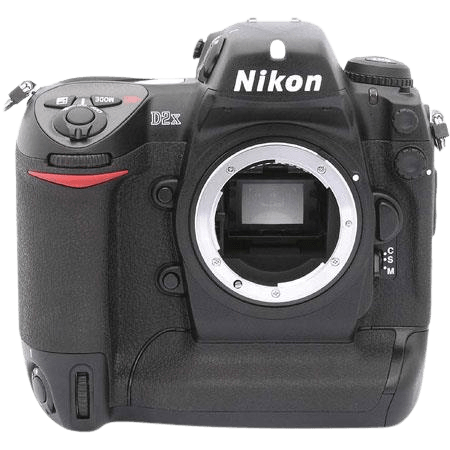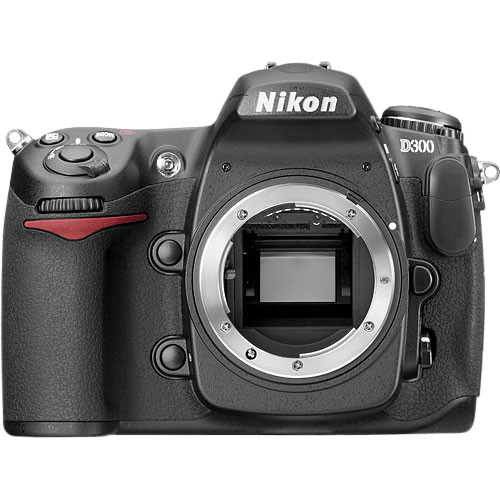Nikon D2Xs vs D300 Comparison
Nikon D2Xs

Nikon D300

The Nikon D300 outperforms the Nikon D2Xs with a score of 49/100 compared to 36/100. Both cameras share similarities, as they are DSLR models from Nikon, released in 2006 and 2007. They differ in size, weight, and launch price, with the D300 being smaller at 147 x 114 x 74mm, lighter at 925g, and more affordable with a launch price of $1540.
The D300’s higher score and lighter weight make it a better choice for those seeking a more portable and cost-effective option. The D2Xs, however, has a larger size of 158 x 150 x 86mm and a heavier weight of 1200g, which may offer better stability for some photographers. Despite its higher launch price of $4250, the D2Xs could be a viable option for those prioritizing size and weight over cost.
Taking these factors into account, the Nikon D300 appears to be the more versatile and budget-friendly choice, while the Nikon D2Xs may suit specific preferences.
Nikon D2Xs vs D300 Overview and Optics
The Nikon D300 surpasses the Nikon D2Xs in optics, scoring 47/100 compared to the D2Xs’s 43/100. Both cameras share some specifications, such as having 12.2 and 12.3 megapixels, CMOS sensor type, APS-C sensor size, Nikon F DX lens mount, and no image stabilization.
The D300’s higher score is due to its superior Expeed processor and a DXOMARK score of 67 for the sensor. These qualities contribute to better image quality and processing capabilities, providing photographers with enhanced performance. In terms of shooting speed, however, the D2Xs takes the lead with a speed of 8 compared to the D300’s 6. This advantage allows the D2Xs to capture fast-paced action more effectively.
While the D2Xs’s faster shooting speed is a notable advantage, the D300’s superior processor and sensor ultimately provide better overall image quality. The D300’s higher DXOMARK score of 67 compared to the D2Xs’s 59 indicates that the D300 has a better-performing sensor, which is essential for capturing high-quality images.
Taking these factors into account, the Nikon D300 proves to be the better choice in terms of optics performance. The higher score reflects its improved processor and sensor, which are crucial for producing quality images. Although the D2Xs has a faster shooting speed, the D300’s other advantages make it the more suitable option for photographers seeking superior optics.
Nikon D2Xs vs D300 Video Performance
In comparing the Nikon D2Xs and Nikon D300, it is important to address their video capabilities. However, both cameras lack video functionality. The D2Xs does not have video capabilities, and the same is true for the D300. A higher score does not make a camera better; rather, it signifies that the camera has better features. In this case, neither camera receives a score for video capabilities, as they do not possess this feature.
Nikon D2Xs vs D300 Features and Benefits
The Nikon D300 outperforms the Nikon D2Xs with a feature score of 54/100 compared to the D2Xs’ 17/100. Both cameras share several specifications, including the lack of a touchscreen, flip screen, GPS, WIFI, and Bluetooth. Despite these similarities, the D300 prevails in certain areas, giving it a higher score.
The D300’s superiority is evident in its screen size and resolution. With a 3-inch screen, it is larger than the D2Xs’ 2.5-inch display, providing a better viewing experience. The D300’s screen resolution of 922,000 dots is significantly higher than the D2Xs’ 235,000 dots, resulting in crisper and clearer images.
The D2Xs does not have any notable advantages over the D300 in terms of features. Both cameras lack modern connectivity options and convenient screen functions, such as touchscreen capabilities and flip screens. However, it is essential to consider that these cameras were released in different years, with the D2Xs being an older model.
Taking into account the differences in feature scores and specifications, the Nikon D300 is the clear winner in this comparison. Its larger screen and higher resolution provide a more enjoyable user experience, while the D2Xs does not offer any unique advantages. Although both cameras share some outdated features, the D300 remains the better choice for those seeking a camera with superior display capabilities.
Nikon D2Xs vs D300 Storage and Battery
The Nikon D2Xs outperforms the Nikon D300 in storage and battery, scoring 51/100 compared to the D300’s 43/100. Both cameras share some storage specifications: each has one memory card slot and accepts Compact Flash (Type I or II) cards. However, the D2Xs has a significant advantage in battery life, providing 2000 shots per charge with its EN-EL4a battery, while the D300 offers 1000 shots using the EN-EL3e battery. Neither camera supports USB charging.
The D2Xs’ longer battery life makes it a more reliable choice for extended shooting sessions or situations where recharging is not possible. On the other hand, the D300 does not offer any advantages in this category, as it shares the same storage specifications and lacks USB charging capabilities.
Considering these factors, the Nikon D2Xs is the superior choice for storage and battery performance. The longer battery life ensures that photographers can capture more shots without worrying about recharging, while both cameras offer the same storage options.
Nikon D2Xs vs D300 – Our Verdict
Are you still undecided about which camera is right for you? Have a look at these popular comparisons that feature the Nikon D2Xs or the Nikon D300:

